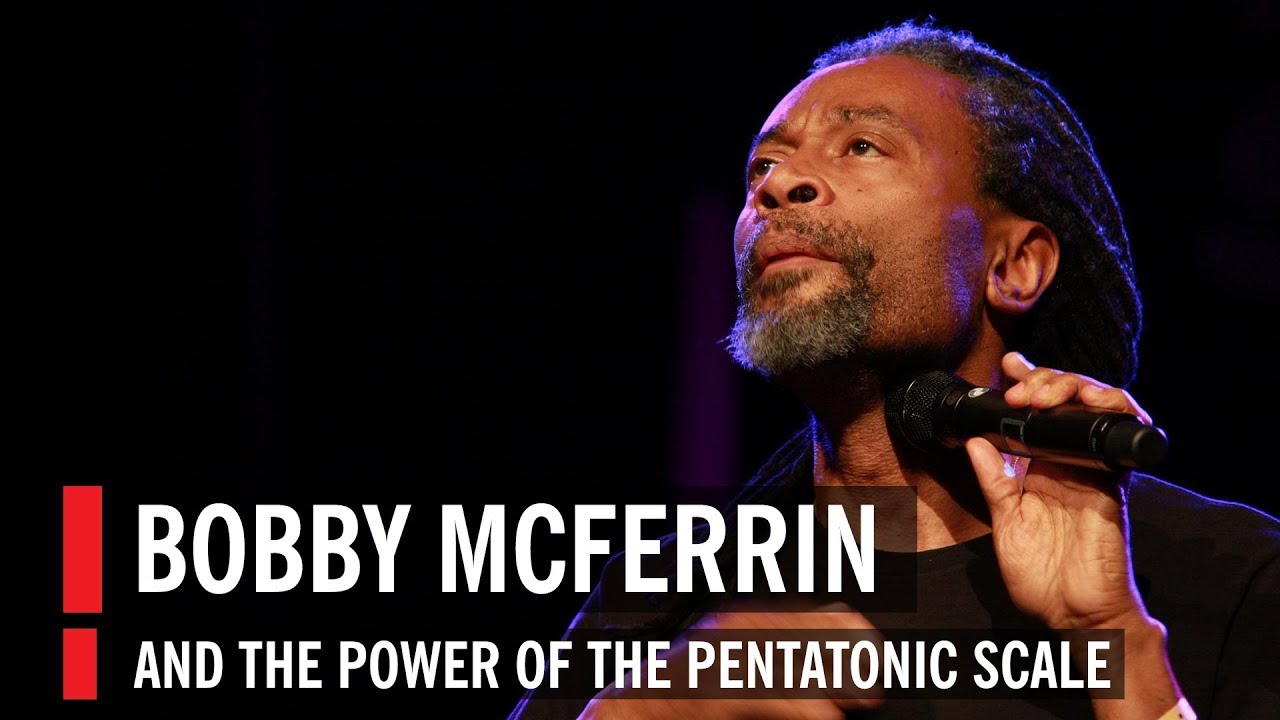In order to talk about the differences between the Major Pentatonic and Minor Pentatonic scales, I want to first make sure that we’re aware of the difference in intervals between a regular major scale and minor scale.
Compared to the major scale, the minor scales’s 3rd, 6th, and 7th degrees are lowered by a half-step.
Major scales intervals 1, 2, 3, 4, 5, 6, 7
MInor scales intervals 1, 2, b3, 4, 5, b6, b7
The lowering of the 3rd, 6th, and 7th degrees of the minor scale gives it a vibe that is more somber, pensive, sad, or badass hard-rockin’. ![]()
(BTW these 7-notes scales which we refer to as MAJOR or MINOR in classical music theory are called Major Diatonic or Minor Diatonic scales.)
What’s difference between a Diatonic (7-note) scale and a Pentatonic (5-note) scale? Remove 2 notes from a Diatonic scale, and you have a Pentatonic scale. Makes sense right? Because, quick math: 7 - 2 = 5.
But which 2 notes do we remove from a Diatonic scale to make our Pentatonic scale? GOOD QUESTION!!!
As I explained in my post about Relative Major & Relative Minor, (and alluded to above in the different intervals between major and minor) THE SOUND of a scale comes from the ORDER OF WHOLE STEPS AND HALF-STEPS.
Music, like life, is all about tension and release, and the half-steps where that tension is created and resolved.
In a major scale the half-steps are between intervals 3 &4 and between 7 & 8. This is where we have our tension and release. The 4 naturally “wants” to resolve down to the 3. And the 7 naturally “wants” to resolve up to the root.
In the minor scale, by contrast, the half-steps are between 2 & b3, and between 5 & b6. The 2 “wants” to resolve up to the b3. And the b6 “wants” to resolve down to the 5.
Interestingly, it turns out that to take a Diatonic scale and make it Pentatonic, we remove the 2 notes where the greatest tension exists - the notes that are a half-step away and beg us for resolution. THIS IS WHY PENTATONIC SCALES ROCK! You can play any of the notes in a pentatonic scale and they’ll sound great.
The INTERVALS of the MAJOR PENTATONIC scale are:
1, 2, 3, 5, 6
The INTERVALS of the MIINOR PENTATONIC scale are:
1, b3, 4, 5, b7
Note there are no half-steps in either scale. And in ONE sense, the scales are one and the same, just as Relative Major & Minor Diatonic scales are. So just as C Major is precisely the same notes as A Minor, so also C Major Pentatonic is precisely the same notes as A Minor Pentatonic. (HOWEVER, as we see in the interval charts above, C Major Pentatonic IS NOT the same as C Minor Pentatonic.)
The Pentatonic scale is found in every culture across the planet - Celtic, Asian, African, American, You-Name-It - which is why I say it’s the HUMAN scale. I recommend taking 3 mins to check out Bobby McFerrin demonstrating this:
He only teaches the crowd 4 of the 5 notes in the scale, but they automatically sing the 5th note and they repeat the notes up and down over 2 octaves! He never told them, “oh this scale only has 5 notes” they just knew the scale. Crazy, right?
I’ve already written all the tabs for Major Pentatonic Scales in 1st and 2nd Position. There’s a ton of it you can play without bends, but the bottom octave of both do require the difficult -3" bend.
And just to throw out one more concept on the subject which might come in handy down the road:
1st Pos: C MAJOR Pentatonic = 4th Pos: A MINOR Pentatonic
2nd Pos: G MAJOR Pentatonic = 5th Pos: E MINOR Pentatonic
But the other thing I wanted to discuss in this post is:
MAJOR PENTATONIC VS. MINOR PENTATONIC IN 2ND POSITION on holes 1-6
In 2nd Position, MAJOR PENTATONIC:
-2 -3" -3 -4 5 6
6 5 -4 -3 -3" -2 (and continuing) 2 -1 2 -2
In 2nd Position, MINOR PENTATONIC:
-2 -3’ 4 -4 -5 6
6 -5 -4 4 -3’ -2 (and continuing) -2" -1 1 -1 -2" -2
Both of those scale work well over the Blues.
BTW - the Blues Scale is derived from the Minor Pentatonic scale with the addition of ONE note, the #4/b5 aka “TRITONE” which on the harmonica is the -4’.
And that’s a good introduction to the subject of the difference between Major Pentatonic and Minor Pentatonic scales. Thoughts? Questions?
Rock on,
Luke




